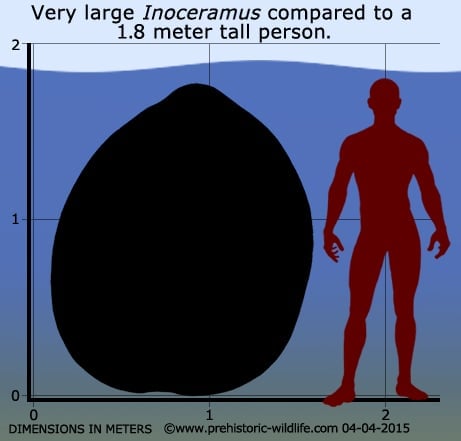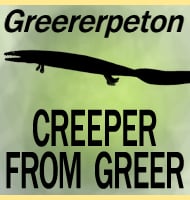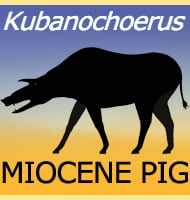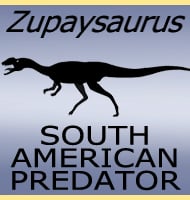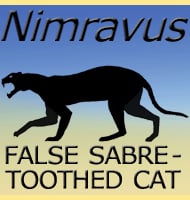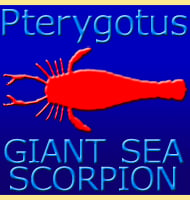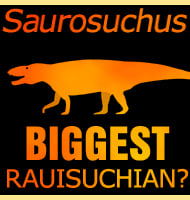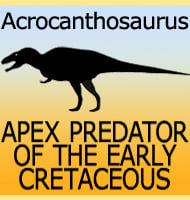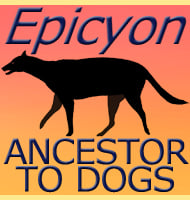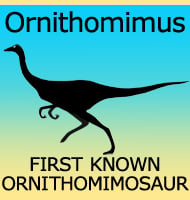In Depth
Inoceramus is the largest known bivalve clam in the fossil record. It is thought that it grew so large so that it could have a larger gill area to cope with oxygen deficient waters. Like smaller versions, Inoceramus would have opened its shell to expose its soft tissue and filter food from the water. When threatened it would then close up to protect the fleshy parts within.
Further Reading
– Contributions to Canadian Palaeontology: New species from the Coloradoan of Lower Smokey and Lower Peace Rivers, Alberta. – Canada Geological Survery 42:117-126. – F. H. McLearn – 1926. – Divisions and faunas of the Hokonui System (Triassic and Jurassic). – New Zealand Geological Survey Paleontological Bulletin 21. – J. Marwick – 1953. – Inoceramids, Didymotis and ammonites from the Nkalagu Formation type locakity (late Turonian to Coniacian, southern Nigeria):biostratigraphy and palaeoecologic implications). – Neues Jahrbuch f�r Geologie und Palaeontologie, Monatshefte 2001(4):193-212. – H. Gebhardt – 2001. – Palaeontology and stratigraphy of the Middle-Upper Coniacian and Santonian inoceramids of the US Western Interior. – Acta Geologica Polonica 56(3):241-348. – I. Walaszczyk & W. A. Cobban – 2006.
